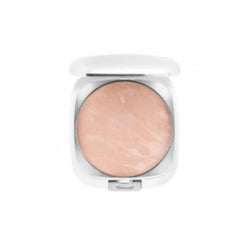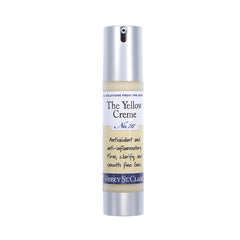Age Spots Relief
Age spots are flat gray to brown to black spots that usually occur on sun-exposed areas of the skin. They are also called liver spots (lentigines, for the medically inclined) even though they are unrelated to the liver or liver function. Associated with aging, they occur most commonly on the backs of the hands, forearms, face, neckline, areas of highest sun exposure. “Age spots” are somewhat of a misnomer as there are multiple factors that cause them. Besides aging, birth control pills, pregnancy, hormones, or free-radical formation can also cause discoloration on the skin. Tanning lamps or beds can cause the same changes. Lotions that contain musk or bergamot can encourage spot formation upon exposure to UV radiation so apply to areas of the body that will not be exposed to the sun. Heredity plays a role. They are harmless but are cosmetically unpleasing. The first line of defense is prevention. Wear protective clothing, sunscreen, and sunglasses, and avoiding sun exposure during midday, when UV rays are the most intense. Most of times though we are not worrying about this until it is too late and the spots are already apparent. Sunscreen and hats are still recommended to avoid intensifying the discoloration and increasing the number of spots. Eradicating these is not an overnight process. It took time to make them and it takes time to remove them. The process is to continually turn over cells until you reach down into the dermal layer that contains the pigment discoloration. Pigments are located at the base of the epidermis so treatments need to penetrate through this layer. Creams and gels formulated to fade age spots do so by exfoliation, bleaching, or inhibition of the enzyme tyrosinase. Ingredients such as glycolic acid, Vitamins C and E, magnesium ascorbyl phosphate (Vitamin C ester), licorice, alpha arbutin, and kojic acid, are especially helpful. Cosmetic chemistry has also produced a new skin brightening agent called Chromabright™. It induces a significant lightening effect on the skin, while fighting against photoaging. Unlike skin lighteners that cause irritation and sensitivity due to the sun, Chromabright™ actually helps to prevent skin damage caused by UV radiation.
No discussion of skin lightening is complete without mentioning hydroquinone. Hydroquinone was once the ingredient of choice to fade age spots because quite simply it works. Alas, in 2001 it was banned in Europe due to a host of unpleasant side effects (including redness, itching, twitching, deepened pigmentation), but most importantly, it was found to cause leukemia in mice. Cancer in humans has not yet been proven, and the FDA is considering banning it in the United States as an OTC drug, but awaits further testing and has not yet done so. The FDA allows OTC concentrations of 2% and 4% by prescription. The 4% solution is most effective for skin lightening. We at the Abbey have made the decision to err on the side of caution and do not use hydroquinone in any products.
Physical exfoliation should also be part of any skin brightening protocol. Scruffing/ dermabrasion type scrubs (Green Tea Scruffing Milk Cleanser
and E, magnesium ascorbyl phosphate (Vitamin C ester), licorice, alpha arbutin, and kojic acid, are especially helpful. Cosmetic chemistry has also produced a new skin brightening agent called Chromabright™. It induces a significant lightening effect on the skin, while fighting against photoaging. Unlike skin lighteners that cause irritation and sensitivity due to the sun, Chromabright™ actually helps to prevent skin damage caused by UV radiation.
No discussion of skin lightening is complete without mentioning hydroquinone. Hydroquinone was once the ingredient of choice to fade age spots because quite simply it works. Alas, in 2001 it was banned in Europe due to a host of unpleasant side effects (including redness, itching, twitching, deepened pigmentation), but most importantly, it was found to cause leukemia in mice. Cancer in humans has not yet been proven, and the FDA is considering banning it in the United States as an OTC drug, but awaits further testing and has not yet done so. The FDA allows OTC concentrations of 2% and 4% by prescription. The 4% solution is most effective for skin lightening. We at the Abbey have made the decision to err on the side of caution and do not use hydroquinone in any products.
Physical exfoliation should also be part of any skin brightening protocol. Scruffing/ dermabrasion type scrubs (Green Tea Scruffing Milk Cleanser ) provide surface exfoliation and encourage cellular turnover. More intense procedures include laser therapy, freezing cryotherapy, or chemical peels. Caution regarding these latter procedures should be exercised as aside from being expensive, some side effects may include permanent scarring or discoloration.
) provide surface exfoliation and encourage cellular turnover. More intense procedures include laser therapy, freezing cryotherapy, or chemical peels. Caution regarding these latter procedures should be exercised as aside from being expensive, some side effects may include permanent scarring or discoloration.
Leave a comment
Comments will be approved before showing up.
Also in Abbey St Clare Blog

The Wheel is Turning. Abbey St. Clare has Closed.
Hello Friends,
The wheel is turning. Transitions are on the horizon. It is with regret that after almost twenty years, Abbey St. Clare is winding down as retirement and a relocation take place in the near future. We will continue taking orders through September 15.

Fix These 5 Hair-Washing Mistakes For Healthier Hair
Is your hair feeling brittle? Scalp dry? Locks not as lustrous as you want them to be? It’s possible you’re damaging your hair with five hair-washing mistakes.
If you follow these guidelines, you will see significant improvement in your hair and scalp health.

Pamper Your Skin and Elevate Your Mood With Essential Oils
Have you ever caught a whiff of cinnamon and felt a boost in your mood instantly? Do you feel calmer and more at ease when using lavender lotion before bed? If you said yes, it’s not just a figment of your imagination!
Ask anybody who uses essential oils regularly, and they’ll probably agree: these natural botanicals can have powerful, positive effects on your mood and overall wellness.


